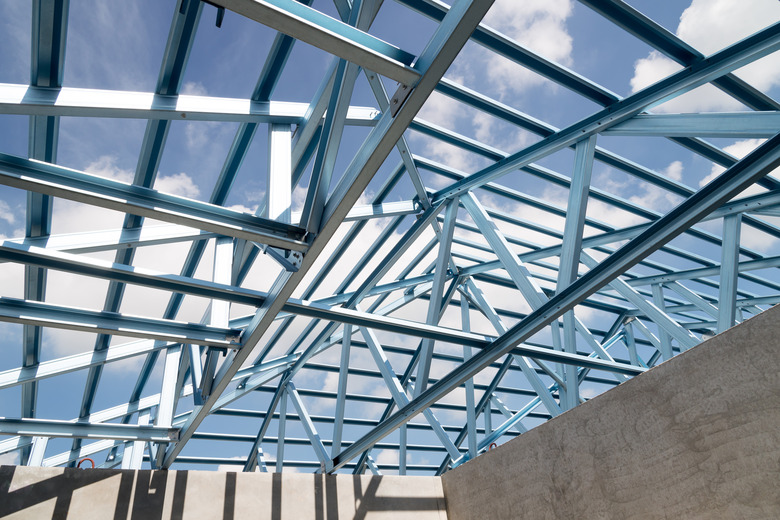Steel Vs. Galvanized Steel Strength
Steel and galvanized steel strength comes from the thickness or gauge of the steel and the amount of carbon added, not the galvanization process which is simply a coating to prevent rust. Carbon added to iron during the smelting process makes iron stronger. Depending on the amount of carbon present, steel can be of different grades serving a variety of purposes. To make galvanized steel, manufacturers add a layer of zinc and other minerals to the surface of the steel to protect it against corrosion or oxidation.
TL;DR (Too Long; Didn't Read)
The strength of steel or galvanized steel depends on what is added during the manufacturing process. The main difference between the two is that galvanized steel has a protective coating that keeps steel from rusting.
A Mined Metal -- Iron
A Mined Metal — Iron
As a mined metal, iron occurs as a naturally occurring oxide in rock. After crushing the ore and smelting it in a furnace, the iron melts and separates from the rock. A form of coal called coke powers the furnace as its fuel source. After adding other minerals such as limestone, silicone and other impurities create a layer of "slag" on the surface of the molten iron, which allows for its removal. During the smelting, iron absorbs the carbon from the coke into itself, strengthening the iron. Once the iron becomes liquid, manufacturers cast it into a variety of molds, such as manhole covers and grates.
Different Grades of Steel
Different Grades of Steel
Different grades of steel exist, each with varying amounts of carbon in them. This can range from 0.25 percent to 1.5 percent carbon. During the smelting process, which involves controlled heating and cooling of the molten iron, smelters add the carbon or coke. A higher level of carbon in steel makes it harder, but also more brittle. By adding less carbon, it allows the steel to be softer, but more malleable.
Galvanized Steel
Galvanized Steel
Zinc protects steel against corrosion because it does not rust. Manufactures create galvanized steel by immersing the metal in a tank of molten zinc called "hot dip galvanizing" at temperatures of 820 to 860 degrees Fahrenheit. Zinc reacts with the iron molecules in the steel to form surface layers which have both elements. When the galvanizing finishes, the steel will be protected by a topmost layer of pure zinc, followed by an additional three layers of zinc mixed with iron molecules, with each layer in decreasing amounts of zinc.
Stainless Steel
Stainless Steel
Stainless steel comes in a variety of grades and categories. Like galvanized steel, stainless steel has an anti-corrosive element added to it, typically 10 percent chromium. Unlike galvanized steel, stainless steel is an alloy with a non-oxidizing element added during the smelting process. The chromium alloy reacts with oxygen in air to form a protective layer of chromium oxide on the steel's surface.
Comparisons of Different Steels
Comparisons of Different Steels
Galvanized and stainless steel both prevent oxidation. But each metal has its specific uses. Galvanizing steel is a cheaper process than making stainless steel. The construction and automotive industries use galvanized steel for machine parts and tools. Stainless steel has a wide variety of grades, each with varying amounts of alloys. These different grades of steel balance malleability with hardness and anti-corrosive properties. Used as cooking utensils, tools and railway tracks, stainless steel has many applicable uses.
Cite This Article
MLA
Conceicao, Peter De. "Steel Vs. Galvanized Steel Strength" sciencing.com, https://www.sciencing.com/steel-vs-galvanized-steel-strength-6681560/. 17 May 2018.
APA
Conceicao, Peter De. (2018, May 17). Steel Vs. Galvanized Steel Strength. sciencing.com. Retrieved from https://www.sciencing.com/steel-vs-galvanized-steel-strength-6681560/
Chicago
Conceicao, Peter De. Steel Vs. Galvanized Steel Strength last modified March 24, 2022. https://www.sciencing.com/steel-vs-galvanized-steel-strength-6681560/
